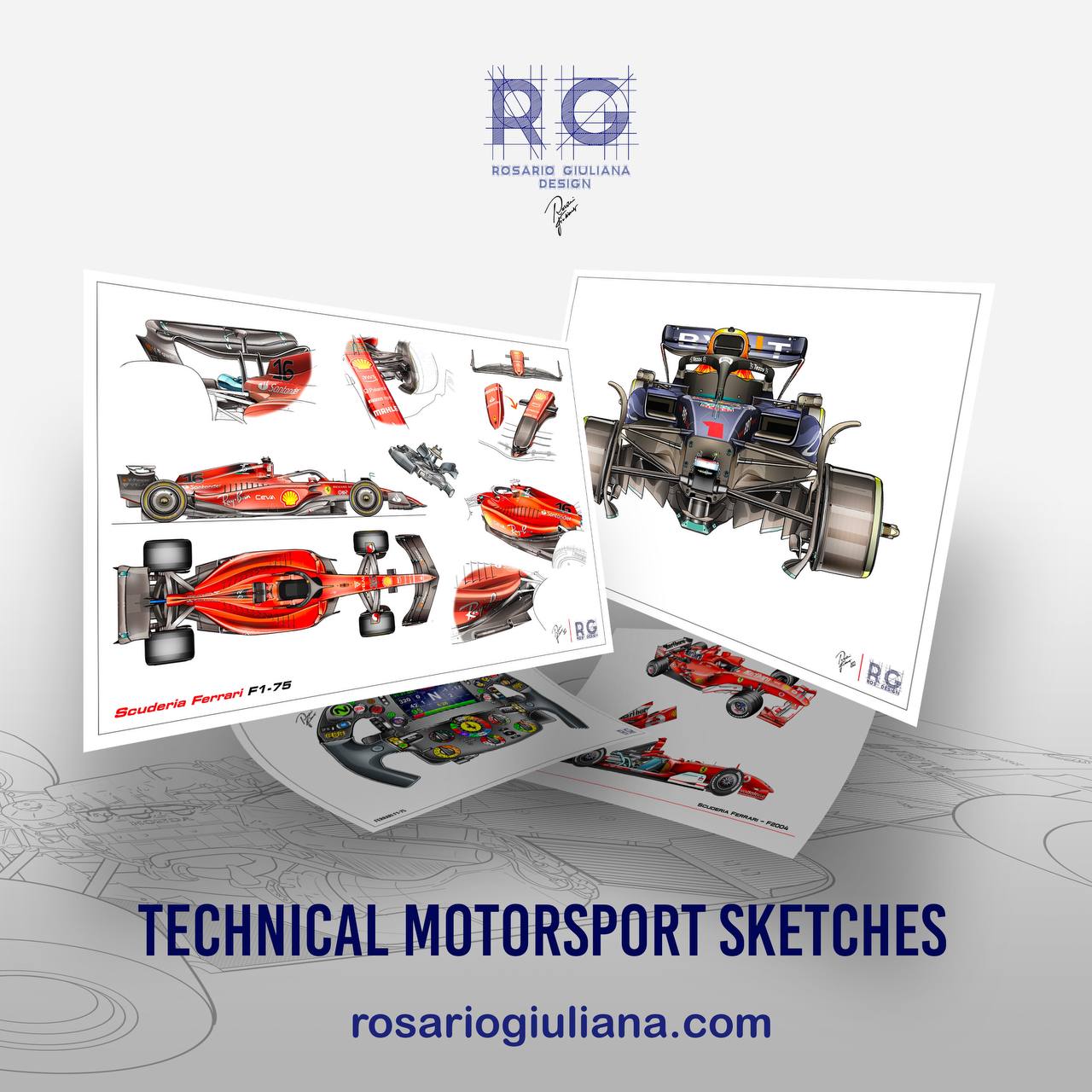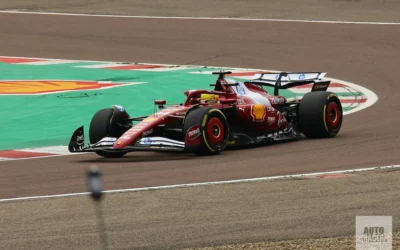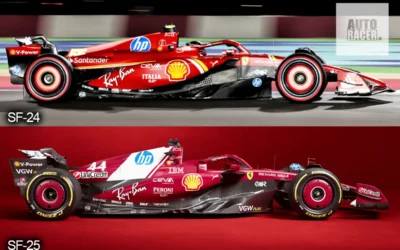Ferrari debuted the SF-25 on the track at Fiorano, with thousands gathering around the circuit to see the 2025 challenger’s debut. The aim for this year is clear – win at least one of the two World Championships.
“Last year we came second in the Constructors’ Championship, so the logical goal for this year is to win that.
“Even though I’ve had a dream since I was a child, which is to become the drivers’ world champion, so my goal is to become that this year,” Charles Leclerc said on the sidelines of the SF-25 presentation.
Ferrari will provide Leclerc and Hamilton duo with a largely revised car. This is consistent with what was previously announced by Vasseur last December.
Ferrari SF-24 reached its limit: A new front suspension to unlock more potential
Among the most obvious technical innovations of the SF-25 is certainly the pull-rod front suspension. Ferrari have opted for the same scheme used by McLaren and Red Bull since the beginning of these regulations.
This choice, made not by Loic Serra but mainly by Diego Tondi last summer, has led to a whole series of changes.
“These cars are so optimised that when you start moving something, you have to move everything else,” said Loic Serra, technical director of the Italian team.
For this reason, the introduction of a different front suspension configuration has triggered other changes. This includes a remaking of the chassis and redesign of the transmission, which is slightly shorter.
Ferrari have also repositioned part of the cooling given the need to move the sidepods backwards.

Ferrari’s choice of front pull-rod suspension is complementary to the SF-25’s new sidepod position. This should allow for better management airflow around the tyres and entrance of the Venturi channels.
With these changes, Ferrari has opened up the possibility of exploiting other aerodynamic avenues. They aim to increase the SF-25’s ceiling, to allow for improvement as the year develops.
“We finished the 2024 season quite strongly. But finding performance in the SF-24 was becoming increasingly difficult,” confirmed Loic Serra.
The Maranello technicians have made the decision to switch to the front suspension preferred by McLaren and Red Bull.
The SF-25’s wheelbase has been lengthened, moving the weights towards the rear, thanks to the presence of a more effective, especially aerodynamically speaking, front suspension configuration.
“From an aerodynamic point of view, the move to the front pull-rod is absolutely the right choice to make.
“It certainly has a positive effect and I suspect others will notice that too,“ James Key, Sauber’s technical director when he was still at McLaren in 2022, correctly stated.
Ferrari SF-25: Serra Doesn’t Believe in a Slow Learning Curve
Front suspension aside, the SF-25 does not look very different aesthetically from its predecessor.
A change of concept in the final year of the technical regulations certainly brings with it pros and cons. The advantage Ferrari are searching for is primarily a steeper development curve.
Of course, this is for the short term. The SF-25 could also turn out to be the car with the most potential compared to the other top teams.
This is where the first major package of updates will come into play. According to Vasseur, this first package could be decisive in directing their season.
“The first races and the first update that we will make to the car will be crucial for the season,” said Ferrari’s Team Principal.

On the other hand, the major changes made to the fundamentals of the car could suggest a drastic change in the dynamics of the vehicle, which would therefore involve a certain period of technical adaptation.
“The disadvantage of having a pull-rod suspension is mechanical.
“It is not a nice design in terms of suspension and it is absolutely not what you would want to have because it is difficult to set up,” said James Key, Sauber’s technical director.
However, according to Loic Serra, the SF-25 will not be used in a very different way to last year’s car, which is why Ferrari’s technical office does not expect major adaptation problems, so no initial steps back and then many steps forward.
“Yes, we have changed a lot of components. But we expect the performance in certain areas to remain similar. While in others, it will certainly be better,“ said the French technical director.
“That’s why I don’t expect a steeper learning curve compared to last year.”





